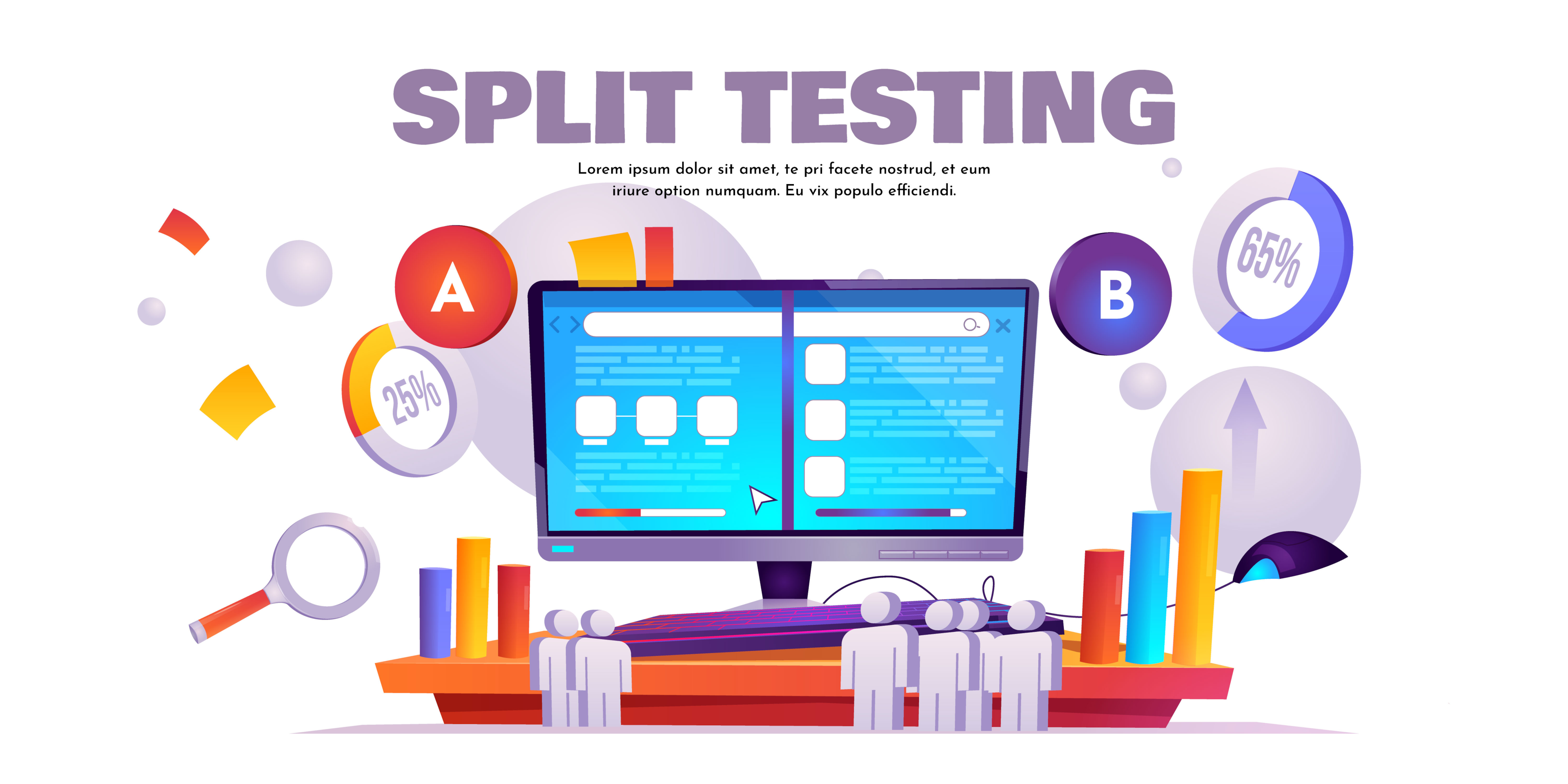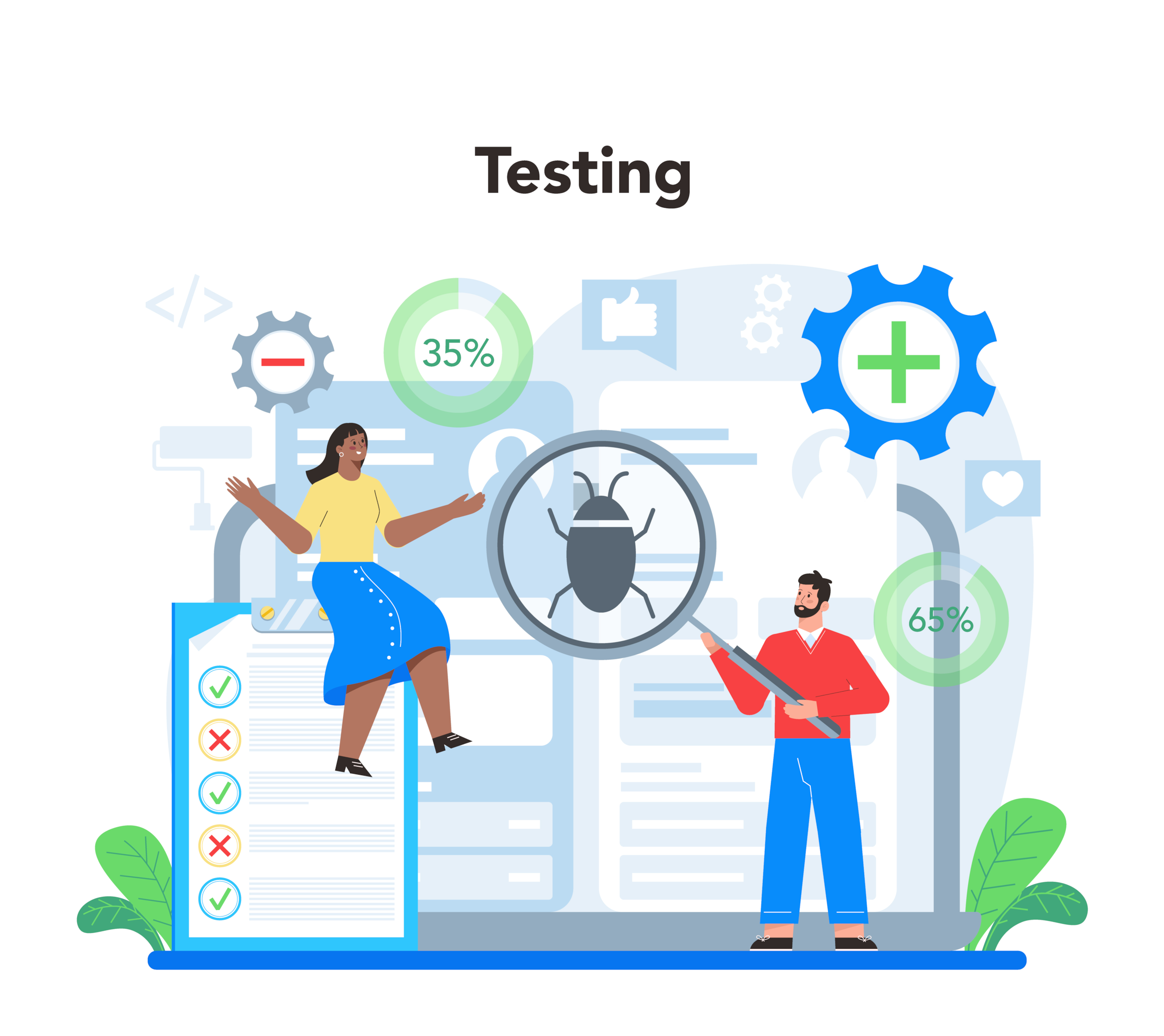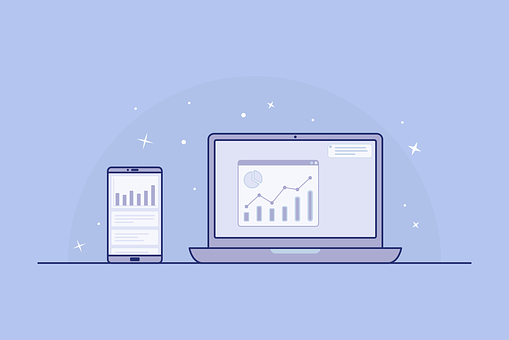We’ll increase conversions by
20-100+%
on your website.
Get a FREE Audit today
See how we can help your business increase conversion rates
How Long to Run an A/B Test?

What is A/B testing?
In today’s fast-paced digital landscape, businesses need to leverage all the tools at their disposal to stay ahead of the curve.
One such testing tool is A/B testing, a methodology that enables organizations to compare the performance of any two versions of a website, app, or marketing campaign. But what is A/B testing, and how does it work?
At its core, A/B testing is a process of trial and error. By randomly dividing a sample population into two or more groups and exposing each group to the same page or a different version of the same experience, organizations can gain valuable insights into what works best for their specific target audience.
This approach allows businesses to test a wide range of variables, including website layout, copywriting, pricing strategies, and more.
But A/B testing is much more than just a numbers game. By tracking user behavior and analyzing conversion rates, organizations can identify which variant is most effective at achieving their desired outcome.
This might include increasing sales, sign-ups, or engagement, all of which are critical metrics for businesses looking to optimize their digital experiences.
Of course, A/B testing is not without its challenges. Properly executing this methodology requires a significant investment of time, resources, and expertise. That’s why many businesses turn to A/B testing service providers to help them save time and effort in conducting these tests.
Moreover, A/B testing results may not always be definitive, and organizations may need to conduct multiple rounds of testing to achieve meaningful insights.
But despite these challenges, A/B testing remains an essential tool for data-driven decision-making. By leveraging the power of trial and error, businesses can optimize their digital experiences to improve performance and stay ahead of the competition.
Whether you’re a small startup or a large enterprise, A/B testing can help you achieve your goals and unlock new opportunities for growth and success.
Why running A/B tests is important for data-driven decision-making?

In the realm of data-driven decision-making, A/B testing reigns supreme as an indispensable approach that provides an objective and scientific method to comprehend user behavior and optimize digital experiences.
By comparing different versions running tests multiple versions of a website, app, or marketing campaign, organizations can make informed decisions based on empirical data rather than relying on subjective opinions or assumptions.
The underlying essence of A/B testing lies in its ability to identify the most effective variations of digital experiences at achieving desired outcomes.
Through meticulous tracking of user behavior and insightful analysis of conversion rates, organizations can gain valuable insights into how users interact with their products or services, which in turn, help identify areas for improvement.
Optimizing digital experiences through A/B testing can have a profound impact on improving customer satisfaction, boosting engagement, and driving business performance.
To illustrate, A/B testing can be instrumental in identifying the most effective design, copy, and layout for your page, pages, and other digital experiences, ultimately resulting in higher conversion rates and increased revenue.
By mitigating factors that cause users to leave a website or app without taking action, such as slow loading times or confusing navigation, A/B testing can also effectively reduce bounce rates.
Furthermore, A/B testing can help organizations pinpoint features that drive user engagement, such multiple elements such as personalized recommendations or interactive elements, ultimately leading to improved user engagement.
On the marketing front, A/B and testing tool can significantly optimize campaigns by helping organizations identify the most effective marketing messages and channels for reaching their target audience.
In a nutshell, A/B testing is an indispensable tool for data-driven decision-making, as it empowers organizations to optimize their digital experiences based on empirical data, rather than relying on subjective opinions or assumptions.
By adopting A/B testing, organizations can stay ahead of the curve in a fast-evolving digital landscape, which is crucial for staying competitive in today’s business world.
Determining the appropriate duration for running A/B tests

The duration for running A/B tests is a critical factor in determining the reliability, accuracy, and statistical significance of the results.
Short A/B test durations can lead to inconclusive or misleading results, while longer test durations can lead to false positives and to wasted time and resources.
Multiple factors need to be taken into account when determining the appropriate duration for an A/B test, including the level of statistical significance desired, the size of the user sample, and the expected effect size of the tested variations.
Achieving statistical significance while minimizing the test duration requires balance.
Running an A/B test for too short duration can result in non-statistically significant results, where the observed difference in conversion rates between the test groups could be due to chance rather than the variations being tested.
Such results can lead to ineffective decisions based on unreliable data, causing an unideal outcome.
In contrast, running an A/B test for too long can result in missed opportunities to implement effective changes and wasted resources.
Furthermore, longer tests can lead to user fatigue, which can impact the accuracy of the results.
As a result, determining the appropriate duration for an A/B test is crucial for making accurate and informed decisions based on reliable data.
To determine the appropriate duration for their A/B tests, organizations should consider factors such as the statistical significance level required, traffic volume, the variance of the conversion rate optimization and rates, and business goals and constraints.
By doing so, organizations can make informed decisions based on reliable data and optimize their digital experiences for improved business performance.
1.) Factors affecting A/B test duration

A. Statistical significance level required
In the realm of A/B testing, the statistical significance level plays a crucial role in determining the reliability and accuracy of the results.
This level refers to the degree of confidence required to reject the null hypothesis, which assumes that there is no significant difference in conversion rates between the control and test groups.
Organizations must carefully consider the level of risk they are willing to accept when making decisions based on A/B test results.
Typically, a statistical significance level of 95% is considered the standard in A/B testing, indicating that there is only a 5% chance that the observed difference in conversion rates is due to chance.
However, lower statistical significance levels, such as 90%, may be appropriate in some cases where the cost of a false positive is low.
Nonetheless, higher statistical significance levels are preferred in most cases to minimize the risk of making decisions based on unreliable data.
Several factors, including the size of the user sample and the expected effect size of the tested variations, determine the statistical significance level required for an A/B test.
For larger samples and effect sizes, a higher level of statistical significance is required to achieve reliable results.
It is worth mentioning that statistical significance in conversion research should not be conflated with practical significance.
Even if an A/B test shows statistically significant results, the observed difference in conversion rates may not be practically a statistically significant result or meaningful in terms of achieving the organization’s business goals.
Therefore, it is crucial to consider both statistical and practical significance when interpreting A/B test results and making data-driven decisions.
B. Magnitude of difference in conversion rates between variants
When it comes to A/B testing, determining the right duration for the test can be tricky. One important factor to consider is the magnitude of the difference in conversion rates between the variants being tested.
The expected effect size can greatly impact the statistical power of the test, which is essentially the likelihood of correctly rejecting the null hypothesis when it’s false.
If the expected effect size is small, a larger sample size or longer test duration may be required to achieve statistical significance.
Conversely, if the expected effect size is large, a smaller sample size or shorter test duration may suffice.
However, it’s important to set realistic goals when determining the expected effect size, as overly optimistic or unrealistic goals can lead to inconclusive or even misleading results, undermining the entire process of data-driven decision-making.
Another factor to consider is the variance of conversion rates between the test groups. If the variance is high, a larger sample size or longer test duration may be required to achieve statistical significance.
Therefore, organizations must take both the expected effect size and the variance of conversion rates into account when deciding on the duration of an A/B test.
By optimizing the testing strategy based on these factors, organizations can achieve reliable and meaningful results that can help them make informed data-driven decisions.
C. Traffic volume

Determining the suitable duration for an A/B test requires meticulous consideration of traffic volume.
Traffic volume, referring to the number of users visiting a website or using a mobile app in a given time frame, plays a significant role in the statistical power of the test and the required duration of the test.
Low traffic volume can impede the test’s statistical power, and larger sample sizes or longer durations may be required to achieve statistical significance.
Conversely, high traffic volume can speed up the test duration or make smaller sample sizes adequate to attain statistical significance.
However, the traffic volume should not be too low to ensure that the test results are a representative sample of the target audience.
Low traffic volume could result in test results that are not reflective of the target audience and may not apply to a more extensive user base.
In addition, traffic distribution between the control group and the test group also warrants consideration.
The traffic should ideally be evenly distributed between the control group and the test group to minimize the risk of biased results.
Thus, determining the appropriate duration for an A/B test requires consideration of both the traffic volume and traffic distribution.
By taking these factors into account, organizations can optimize their testing strategies to achieve reliable and meaningful results, leading to well-informed data-driven decisions.
D. Variance of conversion rates

The fluctuation of transformation ratios is another noteworthy element to mull over when determining the suitable length for an A/B trial.
The fluctuation pertains to the level of diversity or variability in the transformation ratios between the control cluster and the trial cluster.
If the fluctuation is significant, a larger quantity of samples or a more extended duration of the test may be required to accomplish statistical significance.
Conversely, if the fluctuation is low, a smaller quantity of samples or shorter test duration may be adequate to attain statistical significance.
It’s essential to consider that various factors may impact the fluctuation of transformation ratios, such as the intricacy of the trial variations, the extent of user involvement, and the variance in behavior.
Consequently, it’s crucial to scrutinize the factors that may affect the fluctuation and adapt the test’s duration and sample size accordingly.
Moreover, organizations should also think about the statistical power of the test when deciding on the appropriate duration for an A/B trial.
The statistical power indicates the possibility of identifying a genuine effect when it exists. The statistical power is affected by various elements, including the sample size, effect size, and fluctuation.
Thus, when determining the suitable length for an A/B trial, organizations should take into account both the fluctuation of transformation ratios and the statistical power of the test.
By doing so, organizations can optimize their testing approach to gain trustworthy and meaningful outcomes and make informed data-driven choices.
E. Business goals and constraints
In determining the appropriate duration for an A/B test, it is crucial for organizations to take into account their business goals and constraints.
Their testing approach must align with their overall business objectives to maximize the results.
For instance, suppose a company’s primary objective is to increase revenue. In that case, their testing should primarily focus on aspects that directly impact revenue such as pricing, product features, and marketing messages.
However, if their goal is to increase engagement, they should do split testing to concentrate on areas that impact user engagement, such as user interface design, navigation, or content.
Additionally, organizations may face limitations that affect the duration of their A/B tests. Time or budget constraints may restrict the duration of their tests, so they need to balance their testing goals with their constraints to achieve an optimal testing strategy.
Moreover, organizations should also consider the potential impact of their tests on their users. If the test includes significant changes to the user experience, it may be necessary to limit the duration of the test to minimize any negative effects on user engagement or satisfaction.
Hence, organizations must evaluate their business goals and limitations, along with the potential impact of their tests on their users, to determine the appropriate duration for an A/B test.
By using multiple metrics and taking all of these factors into account, organizations can develop an effective testing strategy that delivers valuable insights and drives business growth.
2.) Determining A/B test duration

Calculate the sample size needed to achieve desired statistical power
Determining the ideal sample size for an A/B test is no easy feat. It involves a plethora of factors, including the effect size, significance level, variance, and statistical power.
The effect size is the degree of difference between the control group and the test group. The significance level is the threshold for rejecting the null hypothesis, which is typically set at 0.05.
The variance is the spread or variability in the conversion rates between the control group and the test group.
Lastly, statistical power is the probability of detecting a true effect when it exists, which is typically set at 0.8 or higher.
Statistical power analysis tools or calculators are essential in calculating the sample size required to achieve the desired statistical power.
These tools need input from the effect size, significance level, variance, and desired statistical power to estimate the required sample size.
For instance, let’s say an organization desires a statistical power of 0.8 with a significance level of 0.05, and they expect a 5% difference in conversion rates between the control group and the test group.
They can use a statistical power calculator to determine the necessary sample size. Assuming a variance of 0.2 and a 50/50 traffic distribution between the control group and the test group, the required sample size would be roughly 5,475 users per group, bringing the total sample size to 10,950 users.
However, it’s important to remember that the sample size calculation is just an estimate. Other factors, such as traffic volume and test duration, can also influence the required sample size.
Organizations must thoroughly consider all the factors when determining the appropriate sample size and testing strategy to guarantee dependable and significant results.
Calculate the duration of the test based on sample size, traffic volume, and conversion rate variance
Organizations can harness the power of statistical significance calculators to ascertain the duration of A/B tests by taking into account an array of variables, including sample size, traffic volume, and conversion rate variance.
This entails a convoluted algorithm, that can be daunting for those who are new to the game.
Assuming a desired statistical power of 0.8, a significance level of 0.05, and an even traffic distribution between the control and test groups, the formula for determining the duration of the test is complex:
Duration of test = (2 Sample size) / (Traffic volume per day Conversion rate variance)
For instance, if an organization has a gargantuan sample size of 10,000 users per group, a daily traffic volume of 10,000 users, and a conversion rate variance of 0.2, the duration of the test would be:
Duration of test = (2 10,000) / (10,000 0.2) = 20 days
Thus, the organization would need to conduct the A/B test for a minimum of 20 days to gain statistical significance, and anything less would be insufficient.
It is critical to note that the duration of the test can be affected by a plentitude of factors, such as the intricacy of the test variations and the level of user engagement, rendering the process even more confounding.
Consequently, organizations should meticulously deliberate on all aspects and consistently monitor the test results to ensure that their outcomes are both sound and reliable.
Adjust duration based on business goals and constraints

Adjusting the duration of an A/B test to optimize testing strategy based on business goals and constraints requires careful consideration of several factors.
While statistical calculations can provide a baseline for the minimum duration required to achieve statistically significant results, other factors, such as business goals and constraints, may require tweaking the duration of the test.
For instance, if an organization is up against a tight deadline to make a critical business decision, such as a product launch, it may have to conduct existing version of the A/B test for a shorter duration to meet its timeline.
Conversely, if the goal is to gather as much data as possible to optimize their, they may have to extend the duration of the test.
Moreover, the organization’s budget and resources may also affect the duration of the next test run.
In case of limited resources, they may have to wrap up the test within a shorter duration to conserve resources.
Alternatively, if the organization has a hefty budget and resources, it may run the test for a longer duration to gather more data.
The level of user engagement can also be a key factor impacting the duration of the test. Suppose the test involves significant changes to the user experience, in that case, the organization may have to limit the duration of the test to minimize any negative impact on user engagement or satisfaction.
Therefore, when determining the duration of an A/B test, organizations must carefully evaluate their business goals, constraints, and other factors that may impact the testing strategy.
By doing so, they can develop an effective testing strategy that delivers meaningful insights, drives business growth, and, at the same time, meets their business goals and constraints.
3.) Best practices for running A/B tests

Allow for pre-test data collection
When planning an A/B test, don’t forget to consider the mighty power of pre-test data collection.
‘Tis a crucial step that involves hoarding data on user behavior and conversion rates before running the test. This is your treasure map, me hearties, as it will collect data that can help establish a baseline for user behavior and conversion rates and provide a benchmark for evaluating the results of the A/B test.
Shiver me timbers, pre-test data collection can also unveil any sneaky trends or patterns in user behavior that may skew the test results.
For instance, if a website experiences a wave of traffic during a specific time of day, it may distort the results of the A/B test if it’s conducted during that time.
By collecting pre-test data, savvy organizations can spot any such trends and smartly tweak the test schedule.
Blow me down, ye landlubbers! Pre-test data collection can also ensure that the sample size and test duration are on point.
By analyzing the historical data on user behavior and conversion rates, organizations can predict the expected variance and determine the fitting sample size and duration of the test.
Therefore, when you set sail on an A/B test, never forget to include pre-test data collection in the yer treasure chest.
It can help you establish a baseline, spot any sneaky trends, and determine the right sample size and duration of the test.
By doing so, you can chart a course toward the holy grail of data-driven decision-making and strike gold with your A/B test results.
Randomize treatment assignment in split testing
Utilizing the act of randomizing treatment assignment is an intrinsic step within the A/B testing process to guarantee that the outcomes of the test are statistically valid and not influenced by any factors other than the treatment being scrutinized.
The randomization mechanism is inclusive of assigning users randomly to either the control group or the test group.
This guarantees that there is no partiality in the allocation of users to the different groups and that any distinctions in the results between the groups can be credited to the treatment being tested.
The mechanism for the randomization of webpage can be accomplished in a myriad of ways, such as utilizing a random number generator or assigning users based on the sequence in which they browse the site.
However, it is of utmost importance to ensure that the method utilized for randomization is indeed random and free of bias.
Furthermore, it is essential to ensure that the randomization procedure remains consistent throughout the test in order to evade any changes in the randomization mechanism that may lead to partiality in the results. For instance, if the randomization mechanism is altered midway through the test, it could cause partiality within the results and render the test invalid.
Therefore, when conducting an A/B test, it is critical to implement the act of randomizing the treatment assignment to guarantee that the outcomes are statistically valid and reliable. By doing so, organizations can make well-informed data-driven decisions and enhance their overall testing strategy.
Eschew’s hasty termination of experiments

Avoiding hasty termination of experiments is of the essence to ensure that the experiment results are dependable and credible. Hastily terminating an A/B test can cause inaccurate results, leading to wrong decisions and conclusions.
The premature termination of tests can happen when organizations detect a statistically significant difference between the control and test groups before the test has attained its predetermined duration or sample size. This may lead organizations to stop the test prematurely and make a decision based on partial data.
To avoid hasty termination of experiments, organizations should establish a predetermined sample size and duration for the test before starting the experiment. They can employ statistical methods to ensure that the experiment has adequate statistical power to detect differences between the control and test groups.
Once the experiment has begun, it is critical to avoid checking the results too frequently or making decisions based on interim data. Organizations should wait until the experiment has attained its predetermined duration or sample size before making any decisions based on the results.
Furthermore, organizations should weigh the potential costs of making a decision or call to action based on incomplete data. If a decision is made to implement a change based on premature test results, it may lead to negative consequences that could have been averted if the experiment had run to completion.
Therefore, to ensure dependable and credible experiment results, organizations should avoid hasty termination of experiments and establish a predetermined sample size and duration for the experiment. This way, organizations can make informed data-driven decisions and have enough data to improve their overall testing strategy.
Ponder on running sequential experiments or other testing methodologies

Pondering on sequential experiments or other testing methodologies is a critical consideration when conducting A/B tests. Sequential experiments are a method of A/B testing that allows organizations to adjust their own testing program or strategy based on the results of the experiment as they become available. This can aid organizations in making more informed decisions and improving the accuracy and reliability of the experiment results.
Sequential experiments work by enabling organizations to monitor the experiment results as they become available and adjust their testing strategy accordingly. For instance, if the experiment results show that one treatment is performing better than the other, organizations can allocate more traffic to the better-performing treatment and less traffic to the underperforming treatment.
Other testing methodologies include multivariate testing, multivariate test, which allows organizations to test multiple variations of treatment simultaneously, and factorial testing, which allows organizations to test the impact of multiple variables on the experiment results.
When considering whether to use sequential experiments or other testing methodologies, organizations should consider their specific business goals and constraints, as well as the resources and expertise available to conduct the experiment.
Sequential experiments and other testing methodologies can be more complex and require more resources than traditional A/B testing, so organizations should weigh the potential benefits against the costs and resources required to implement these methodologies.
Conclusion

Factors affecting A/B test duration and best practices for running A/B tests
In synopsis, there are multiple components that can influence the duration of an A/B experiment, comprising the desired statistical power, traffic magnitude split test itself, variation of conversion rates, commerce objectives, and constraints, and the requirement for pre-experiment data acquisition. To conclude the appropriate duration for an A/B test, organizations ought to compute the necessary sample size based on these components and allocate ample duration to assemble the obligatory data.
To assure dependable and truthful experiment results, organizations should comply with optimal practices when executing A/B experiments, including randomizing treatment assignments, supervising the experiment for anomalies or technical problems, evading premature termination of experiments, and mulling over the adoption of sequential experimentation or other experimentation methodologies.
Additionally, organizations should weigh the possible expenses and benefits of A/B experimentation and balance them against the resources and expertise necessary to execute the experiment. By complying with these optimal practices and accounting for these components, organizations can achieve better-informed data-driven resolutions and enhance their general experimentation approach.
Emphasize the importance of thorough planning and data analysis in A/B testing.
Behold! The success of A/B testing hinges upon meticulous planning and exhaustive data analysis. Planning is the bedrock upon which the test stands, providing the structure and control necessary to analyze results and for dependable results. The process of data analysis, in turn, brings a further layer of assurance that the results of future tests are unequivocal and reliable.
Planning itself entails an arduous and precise process. One must establish a clear and precise objective for the test, choosing the ideal metrics to measure and adequate sample size and duration. Selecting which treatments to test is also a critical decision in the planning process. There are also many variables that can confound or bias the test, which must be identified and controlled for.
Data analysis, on the other hand, involves the diligent collection and analysis of all relevant data from the test. This includes calculating the statistical significance of the results, comparing the control and test groups, and gauging the difference in conversion rates between the groups. Interpreting the results in the context of business objectives and constraints is also crucial in the process of data analysis, as the results of data metric will determine the data-driven decisions that follow.
A/B testing relies on thorough planning and meticulous data analysis for a multitude of reasons. Primarily, such practices guarantee the test’s structure and control, thereby mitigating the risk of biases or confounding variables corrupting the results. Secondly, these practices ensure that the results are precise and dependable, which is indispensable in the data-driven decision-making process. Thirdly, they also make sure that the test is executed economically and efficiently, which is vital for organizations with limited resources.
In conclusion, meticulous planning and exhaustive data analysis are essential to the success of A/B testing. By adhering to best practices for planning and data analysis, organizations can be confident that their tests are structured and controlled, and that the results of run tests are reliable and trustworthy. This enables businesses to make informed, data-driven decisions and improve their overall testing strategy.








